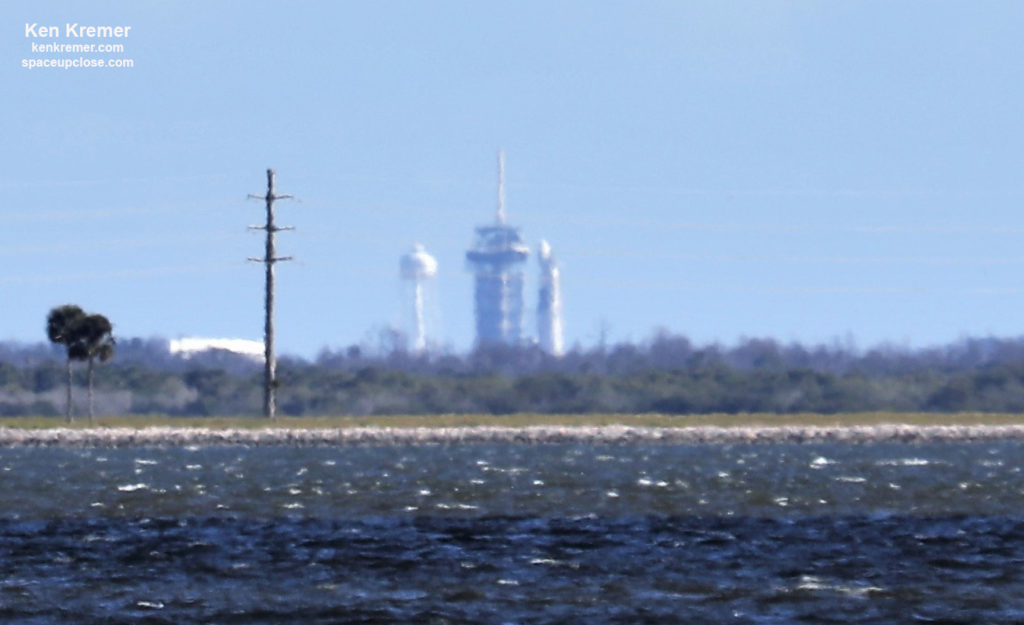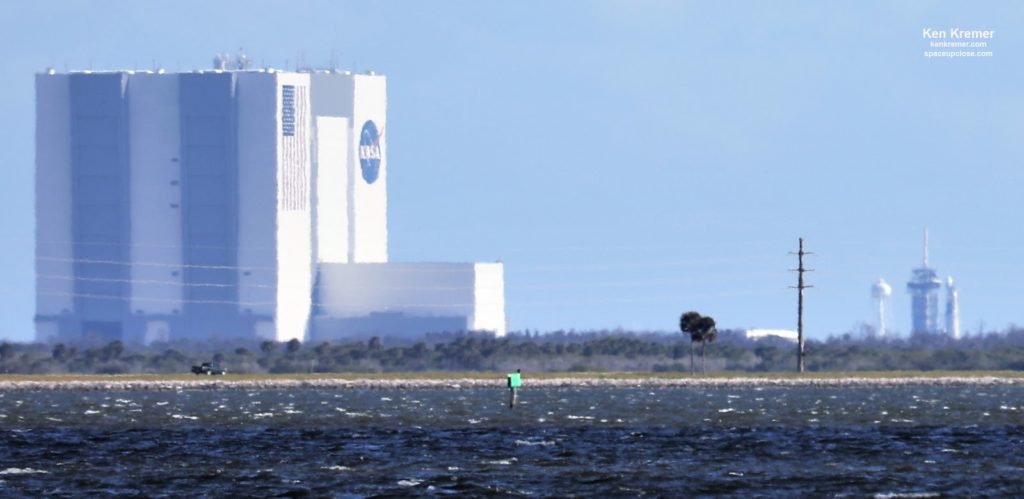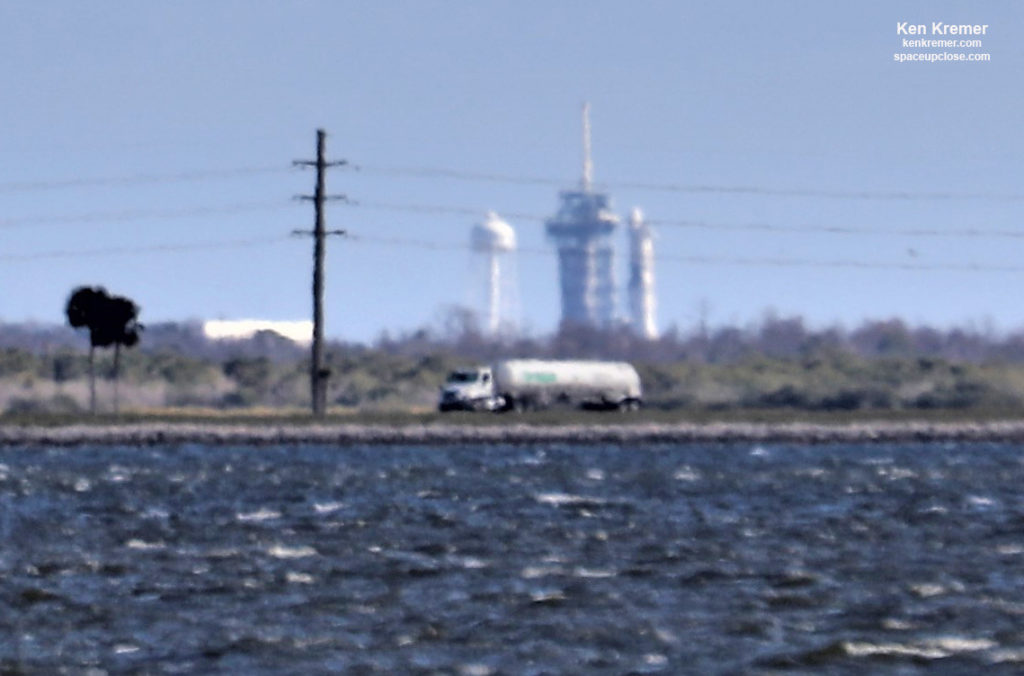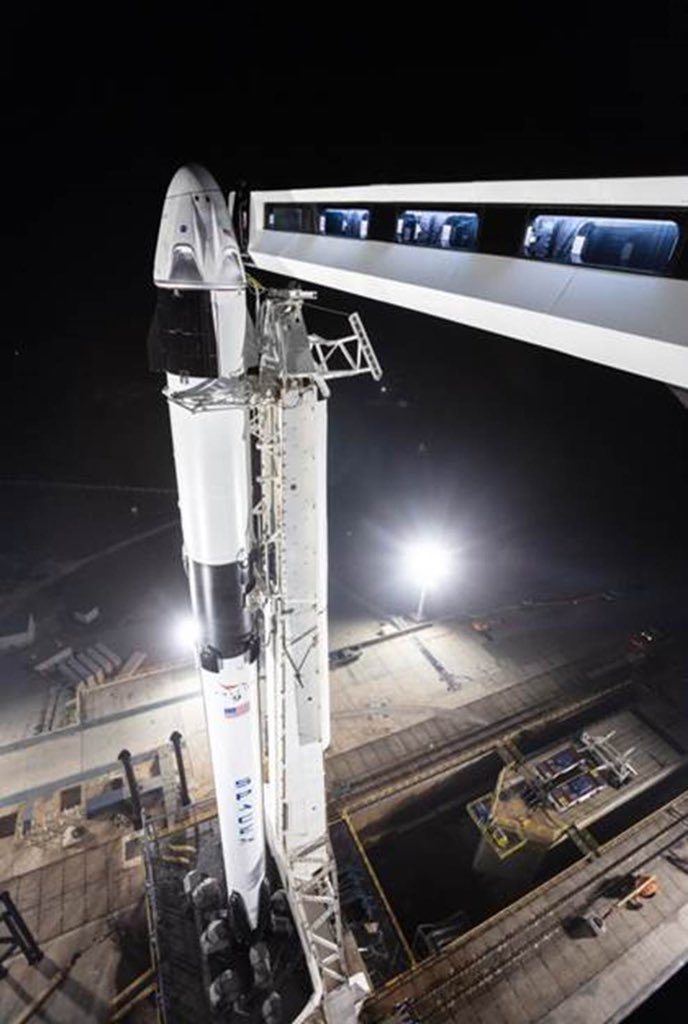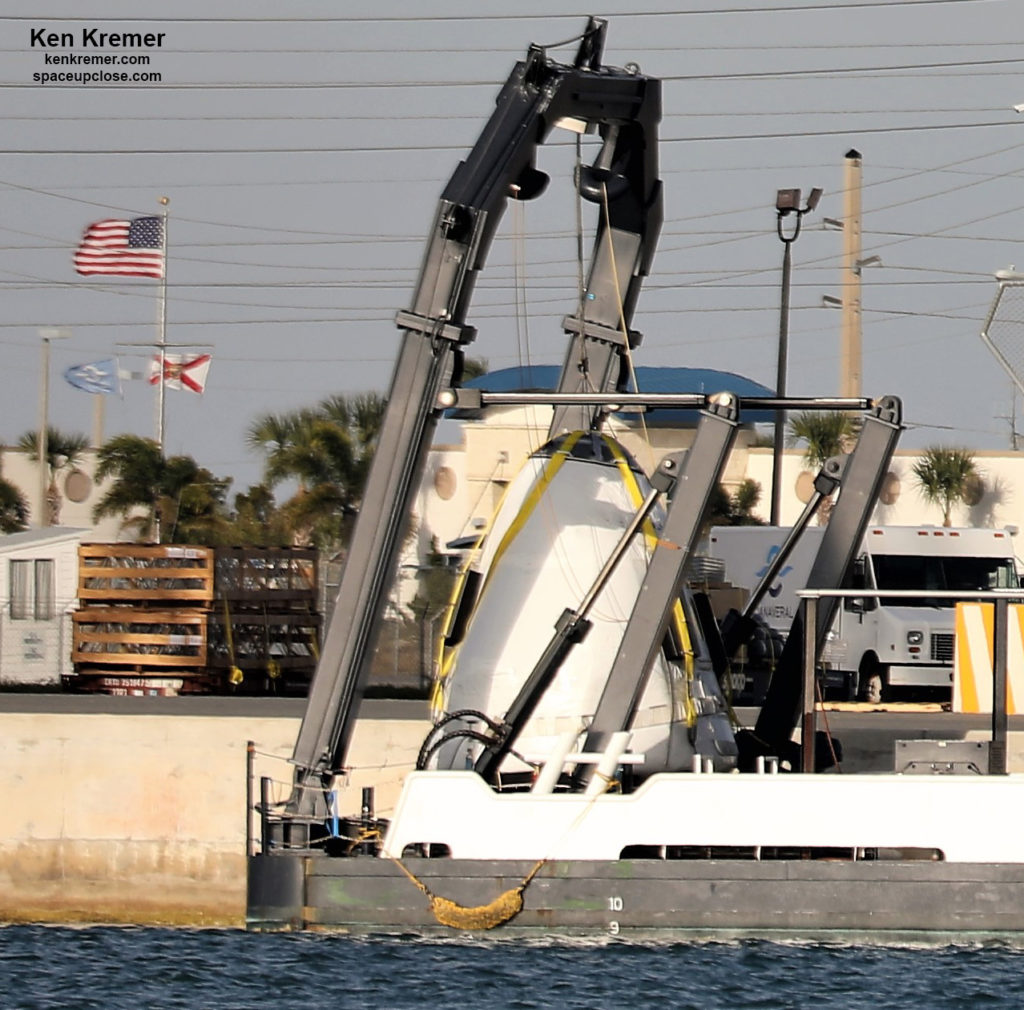RocketSTEM –22 January 2019
CAPE CANAVERAL,
FL –
SpaceX technicians rolled out the first integrated Falcon 9 rocket and space
worthy Crew Dragon in the wee hours this morning Tuesday, Jan 22, and raised it
vertical in the 8 a.m. EST hour at NASA’s historic Launch Complex 39A in
Florida at the Kennedy Space Center (KSC) in anticipation of the crucial static
fire test planned as soon as Wednesday, Jan. 23 leading to the long awaited and long
delayed return of human spaceflight capabilities to the United States.
UPDATE
Jan 23: static hot fire test postponed to NET Jan 24.
Amidst the ongoing and deleterious US Government Shutdown SpaceX
and NASA are ramping up activities preparing for blastoff of the new Falcon 9 rocket
and Crew Dragon on the uncrewed Demo-1 (DM-1) mission at some point NET (no
earlier than) mid-February.
Space UpClose observed the combined two stage Falcon 9 and Demo-1 Crew
Dragon raised erect at pad 39A shortly after going vertical this morning – as illustrated
in my photos taken at a distance through the haze from Titusville, FL.
the National Wildlife Refuge are completely closed to the public for the foreseeable
future.
Unfortunately at
the moment there is no end in sight to the US government shutdown.
Thus a true target
Demo-1 launch date likely remains elusive since most NASA workers remain furloughed.
A small team of NASA workers assigned to the Demo-1 mission to oversee and
verify the work carried out by SpaceX technicians at pad 39A remains on duty.
Based on unofficial
sources and postings the Falcon 9 static fire test could potentially taken
place between 2 p.m. and 8 p.m. EST.
Per normal
practice SpaceX has not officially confirmed the timing and date of the static
fire test.
The flight utilizes
the new Falcon 9 booster core #B1051 and the Crew Dragon – both on their maiden
missions.
The integrated
stack rolled out once before in early January for pad fit checks and checkout
operations.
Surprisingly the two
stage Falcon 9 rocket was rolled out to pad 39A with the Dragon capsule
attached for the test firing. Normally
the payload is not bolted on top in order to keep it safe in case of a disaster
like happened with the Amos-6 on pad explosion during static fire test fueling
operation back in Sept 2016 resulting in catastrophic destruction of the
payload and rocket and extensive damage to pad 40 at Cape Canaveral Air Force
Station.
The hold down
static fire test is routinely carried by SpaceX to ensure all is ready with the
rocket.
During the engine test all nine Merlin 1D first stage
engines are briefly ignited for several seconds.
During the hold down static fire
test, the rocket’s first and second stages are fueled with liquid oxygen and RP-1
propellants just like an actual launch, and a simulated countdown iss carried
out to the point of a brief engine ignition.
The hold down
engine test with the erected Falcon 9 rocket involves the ignition of all nine
Merlin 1D first stage engines generating some 1.7 million pounds of thrust at
pad 39A while the two stage rocket is restrained on the pad.
The SpaceX Crew
Dragon and Boeing Starliner under currently development to
once again ferry American astronauts to the International Space Station (ISS) from American soil on American rockets to end our
sole reliance on the Russian Soyuz since the forced shutdown of NASA’s space
shuttles in 2011.
The private SpaceX
crew dragon will fly on the Demo-1 mission to the ISS and was developed under
the auspices of NASA’s Commercial Crew Program. Although no astronauts will be
aboard this test flight, two crew members will soar to orbit on the follow-up Demo-2
test flight several months later in June 2019 – according to current
projections.
showing progress towards astronaut launches, a mock-up of SpaceX’s privately
built Crew Dragon spaceship sailed into Port Canaveral last week on the dedicated
‘GO Searcher’ recovery ship after
conducting trails at sea as practice demonstrations to prepare the naval team for
hoisting real capsules holding NASA astronaut crews on deck after their fiery return
from space and splashdown in the Atlantic Ocean.
Vice
President Mike Pence recently visited the SpaceX launch facility at NASA’s Kennedy
Space Center in Florida where the Crew Dragon DM-1 spaceship and Falcon 9
rocket are being processed for the launch.
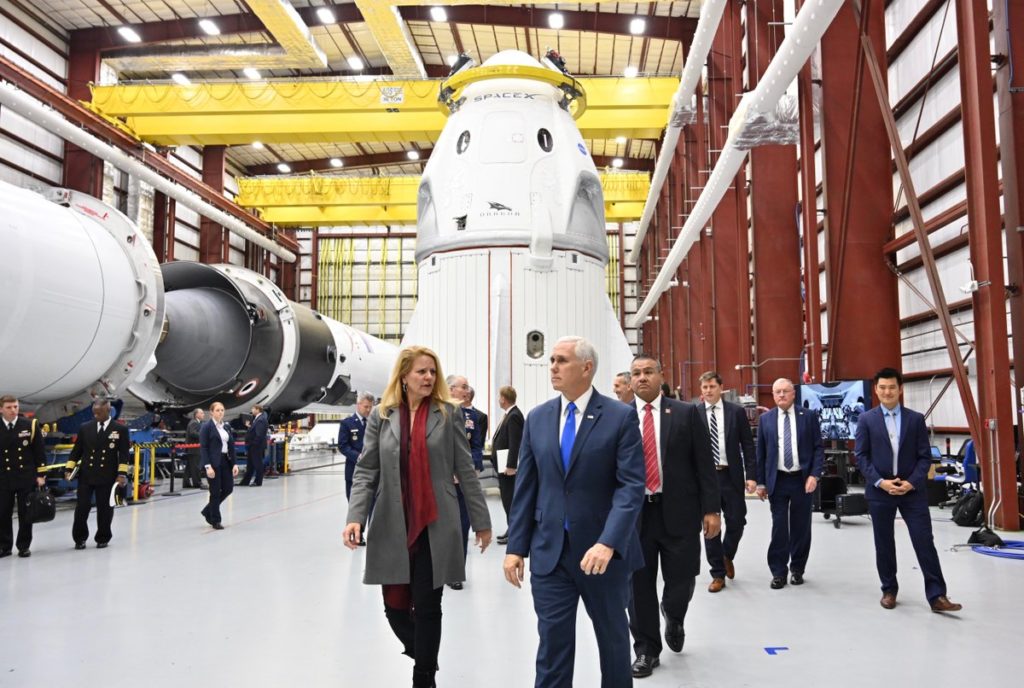 |
|
VP Mike Pence tours the SpaceX launch processing facility with
SpaceX President Gwynne Shotwell to visit the Crew Dragon and Falcon 9 rocket on Dec. 18, 2018. Credit: SpaceX |
received a personally guided tour from SpaceX President Gwynne Shotwell and met
with SpaceX employees.
opportunity to see @SpaceX‘s Dragon 2 Capsule – an important part of the
future of American human space exploration as we aim to return American
astronauts to space on U.S. rockets from U.S. soil!” VP Pence tweeted on Dec. 18,
2018 from Launch Complex 39A at KSC.
The goal of NASA’s Commercial Crew Program is to restore America’s capability to
launch human spaceflight missions
from the U.S. to low Earth orbit (LEO) and the International Space Station
(ISS) on American capsules with American rockets from American soil – and
thereby end our 100% reliance on the Russian Soyuz capsules.
The US became solely dependent
on Russia due to the forced shutdown of NASA’s Space Shuttles back in 2011 when
both political parties failed to provide sufficient US Federal budget funding
support to NASA’s human spaceflight programs.
Target timelines for return US
human spaceflight capability have been pushed back repeatedly since 2015 due to
endless mindless political squabbling as well as technical challenges.
SpaceX will have to accomplish all this critical work and
do it safely for NASA with significantly fewer staff after the company
announced a 10% reduction in workforce earlier this month – as I reported here.
Here’s a link to my Fox News 35 Orlando
interview and commentary about the negative impact of the US Government
shutdown on NASA- as seen on Jan 8:
Watch for Ken’s
continuing onsite coverage of NASA, SpaceX, ULA, Boeing, Lockheed Martin,
Northrop Grumman and more space and mission reports direct from the Kennedy Space
Center, Cape Canaveral Air Force Station, Florida and Wallops Flight Facility, Virginia.
and human spaceflight news: www.kenkremer.com –www.spaceupclose.com – twitter
@ken_kremer – email: ken at kenkremer.com
journalist and photographer based in the KSC area.
Ken’s photos are for sale and he is available for lectures and outreach events


